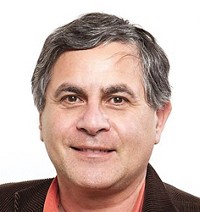Advertisement
Grab your lab coat. Let's get started
Welcome!
Welcome!
Create an account below to get 6 C&EN articles per month, receive newsletters and more - all free.
It seems this is your first time logging in online. Please enter the following information to continue.
As an ACS member you automatically get access to this site. All we need is few more details to create your reading experience.
Not you? Sign in with a different account.
Not you? Sign in with a different account.
ERROR 1
ERROR 1
ERROR 2
ERROR 2
ERROR 2
ERROR 2
ERROR 2
Password and Confirm password must match.
If you have an ACS member number, please enter it here so we can link this account to your membership. (optional)
ERROR 2
ACS values your privacy. By submitting your information, you are gaining access to C&EN and subscribing to our weekly newsletter. We use the information you provide to make your reading experience better, and we will never sell your data to third party members.
Misconduct
New Office of Research Integrity leaders look to bring US agency into the digital age
Officials are prioritizing evidence preservation and automating image investigation
by Dalmeet Singh Chawla, special to C&EN
August 25, 2020

Keeping tabs on research misconduct and scientific fraud is the job of the Office of Research Integrity (ORI) in the US Department of Health and Human Services (HHS). Leading that office is a tricky job, judging by the turnover it’s seen in recent years.
In March 2014, the agency’s then-director, David Wright, quit abruptly, complaining of dysfunctional bureaucracy. It took the agency until December 2015 to replace him with Kathryn Partin. By the middle of 2016, Partin reportedly faced a staff revolt over her tone and the direction she took the ORI. In 2017, Partin transferred to another agency.
In March this year, the Office of the Assistant Secretary for Health (OASH) appointed new leadership at the ORI. Elisabeth Handley, who has served as interim ORI director since August 2019, had her position made permanent. Longtime HHS staffer Wanda Jones, who stepped in to serve as interim ORI director between Partin and Handley, was appointed as deputy director last June. In March, she also took on the role of associate director of research and scientific integrity.
Over the years, the ORI has drawn criticism for moving too slowly and issuing sanctions that some argue are not harsh enough. Still, the agency remains one of few in the world that not only sanctions misconduct but names the researchers involved. This year, the UK also plans to create a research integrity committee that would similarly monitor whether the country’s universities are properly investigating research misconduct cases and potentially issue sanctions when necessary, the UK’s government has said.
The ORI’s Handley and Jones spoke to C&EN about their respective new roles, how they plan to change the office, and their hopes for the future.
“ORI has always had good people recognized in their fields before coming to work with ORI,” Jones says. “We’ve suffered some personnel losses over the past decade, so rebuilding is job one despite a tight budget.” Handley adds that staff turnover at the ORI has slowed, and the agency is recruiting new staff to build on the expertise of existing staff.
For Jones, it’s crucial that the agency add new technologies to its arsenal. As one step in that direction, earlier this spring the agency sent out a request for information on best practices for obtaining and preserving evidence during research misconduct proceedings. The ORI is particularly concerned about data stored in cloud computing databases, personal electronic equipment, and storage devices.
The agency’s regulations date back to 2005, notes Handley, when cloud computing didn’t exist and cell phones were clunky. “The world has evolved since then,” she says. “There is a lot of expertise out there that we want to use to inform our future directions. So, we want to hear from people throughout the US and around the world about what they have found to be successful as ways of sequestering evidence.”
Officially, the ORI provides oversight to misconduct probes conducted at US research institutions. The office receives around 200 allegations of research misconduct, and each of its investigators takes on 35–40 cases, Handley and Jones say. They note that developments in artificial intelligence could potentially help the ORI speed up its investigations. Estimates suggest that around 80% of the agency’s cases involve manipulation of images of some sort. Partly automating the sleuthing process—which currently involves manually sifting through the literature looking for overlapping patterns in biological images—would speed up probes.
Faster investigations are important because delays mean researchers guilty of fraud may continue to receive federal funding for longer. Delays also mean more research is conducted on top of faulty studies. Consequently, the ORI is also working to identify whether retractions and corrections stemming from misconduct cases have been accomplished, Handley says.
Of the 200 cases referred to the ORI each year, many are not investigated. Sometimes ORI investigators dismiss the claims because they involve research that took place more than 6 years ago, which is the agency’s statutory limit. Other allegations may not be within the ORI’s jurisdiction, such as research involving human subjects or that is not funded by public health service agencies.
The ORI staff investigates and closes 40–70 cases annually. Most of them have no findings or the evidence is not “legally defensible to support a specific finding of research misconduct,” Handley and Jones say. They note that it’s often difficult to find evidence of fabrication, falsification, and plagiarism due to accidental or deliberate destruction or loss of evidence. In some cases, the ORI determines that misconduct occurred but can’t pinpoint who was responsible. The ORI believes that the number of false allegations reported to them are low.
Only in a handful of cases, when the ORI determines that a particular researcher has committed some sort of fraud, are the findings released publicly. When cases close with no findings, often institutions conduct their own investigations and are free to take action as their rules permit.
Handley says the ORI has remained “open for business” throughout the pandemic. As many have noted, urgent COVID-19 research is currently being conducted at breakneck speed, by circumventing peer review and sometimes even cutting corners. “I worry that a rush to publication of small studies or very early results without peer review can divert resources to ineffective approaches to treat or control the virus,” Jones says. “While these instances may not represent misconduct, it hurts science and only adds to the public’s mistrust when a much-hyped early result is later shown worthless.”
“The public takes it for granted that they can count on research results being true,” Handley says, “but unfortunately that is not always the case.”



Join the conversation
Contact the reporter
Submit a Letter to the Editor for publication
Engage with us on Twitter